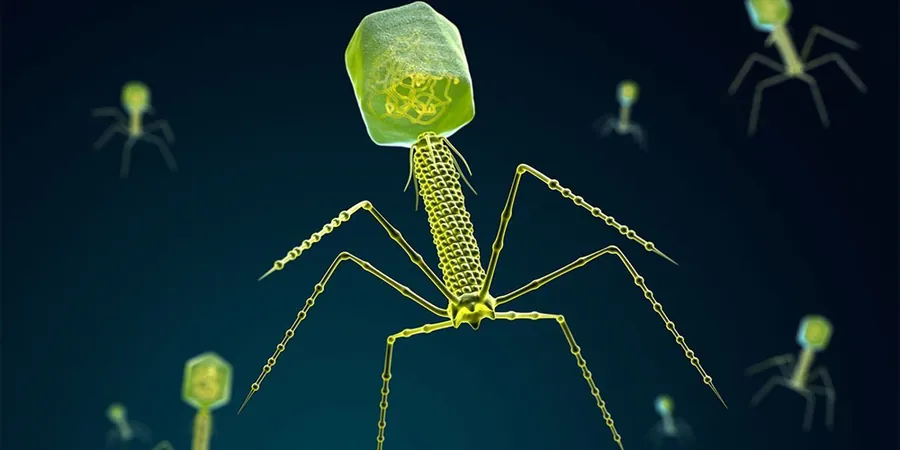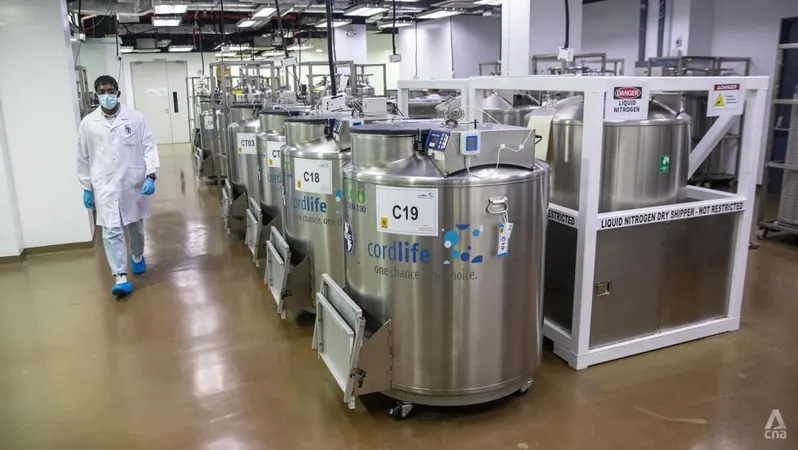
Revolutionary Discovery: How Viruses Use 'Selfish' DNA as Secret Weapons Revealed!
2024-09-28
Groundbreaking Study on Selfish DNA
In a groundbreaking study, researchers have unveiled that certain segments of DNA once believed to be 'selfish' might actually play a crucial role in the survival dynamics of viruses, challenging long-standing assumptions about these genetic elements.
The Nature of Selfish Genetic Elements
Traditionally, these pieces of DNA, dubbed "selfish genetic elements," were thought to exist solely for their own propagation, adding no real benefit to their hosts. They were dismissed as mere genetic hitchhikers gliding through generations without any significant impact on the organisms they inhabit.
Insights from UC San Diego's Research
However, a team from the University of California San Diego has discovered that these so-called selfish genetic elements may be wielding considerable power in the evolutionary game of survival. Their study, published in the esteemed journal *Science*, focused on bacteriophages—viruses that notoriously infect bacteria and boast the title of the most abundant organisms on our planet.
Startling Discoveries about Mobile Introns
The researchers made a startling finding: these selfish genetic elements, specifically a type known as "mobile introns," can actively weaponize themselves to give their host viruses a distinct competitive edge against other phages. They discovered that these introns disrupt the reproductive abilities of rival viruses, essentially acting like molecular combatants in an ongoing war for supremacy.
Revolutionary Implications
"This study is revolutionary," said Erica Birkholz, one of the lead authors and a postdoctoral scholar in Molecular Biology. "It is the first time that a selfish genetic element has been shown to provide a competitive advantage to its host, reshaping our understanding of how these elements influence the evolution of all life forms."
Research Methods and Findings
For decades, while the existence of selfish genetic elements was established, their functional significance remained a mystery. In this new investigation, which concentrated on massive "jumbo" phages, researchers observed the dynamics of two phages co-infecting a single bacterial cell. They homed in on an enzyme called endonuclease, which acts almost like a DNA scalpel. This enzyme, derived from one phage's mobile intron, was found to cut crucial components in its competitor’s genetic blueprint, effectively crippling their ability to reproduce and thrive.
Endonuclease as a Weapon
"This endonuclease acts as a weapon, giving its phage host a distinct advantage," Birkholz emphasized.
Implications for Phage Therapy
This discovery carries profound implications, particularly in the context of the escalating evolutionary battle between viruses, where co-infection becomes increasingly common. The findings could influence phage therapy, a promising strategy in combating antibiotic-resistant bacteria—a growing global health crisis. As doctors begin to blend various phages into treatment cocktails, understanding which combinations leverage these selfish genetic elements could help enhance their effectiveness.
Conclusion and Future Perspectives
In summary, the revelation that selfish genetic elements can be harnessed as weapons represents a monumental shift in our comprehension of viral evolution and survival strategies, marking a pivotal moment in both genetic research and medical applications. The implications of this study could extend far beyond virology, offering new insights into the evolutionary pressures that shape all forms of life on Earth. Stay tuned, as the story of these microbial warriors continues to unfold!



 Brasil (PT)
Brasil (PT)
 Canada (EN)
Canada (EN)
 Chile (ES)
Chile (ES)
 España (ES)
España (ES)
 France (FR)
France (FR)
 Hong Kong (EN)
Hong Kong (EN)
 Italia (IT)
Italia (IT)
 日本 (JA)
日本 (JA)
 Magyarország (HU)
Magyarország (HU)
 Norge (NO)
Norge (NO)
 Polska (PL)
Polska (PL)
 Schweiz (DE)
Schweiz (DE)
 Singapore (EN)
Singapore (EN)
 Sverige (SV)
Sverige (SV)
 Suomi (FI)
Suomi (FI)
 Türkiye (TR)
Türkiye (TR)